Spain
Flash floods and Urban flooding
The definition of a flash flood
Although there is no single definition, a flash flood is usually defined as a sudden flood in a small catchment area (usually less than 1000 km2), occurring within 6 hours or less of the causative event (heavy rain, dam break, levee failure, rapid snowmelt or glacier-outburst flood) and often within 2 hours of the start of high intensity rainfall. Flash floods are usually caused by heavy rainfall that can either be local, affecting only one or two catchments, or more extended, producing flash floods as part of the framework of a major flood event (16).
Vulnerabilities - Europe
Flash floods caused on average 50 casualties per year in Europe, 70% of the total number of deaths due to floods (8). The fatalities mainly occur in countries surrounding the Mediterranean Sea, where a large population density exists at the coastal areas due to the important urbanization processes in this area during the last decades (14). Particularly in Spain, almost 90% of the victims due to floods are caused by flash floods (15).
The Mediterranean region is prone to flash floods, especially in the northwest (17), where littoral and pre-littoral mountain chains favour not only torrential rain concentrated in small catchments, but also heavy rainfall. The short concentration times and the extraordinary runoffs that develop can turn into catastrophic flash floods like those that occurred on 25 September 1962 in north-eastern Spain, when 815 people died in less than 5 hours (18,21). In the Mediterranean region, summer events are usually local and of short duration, while in the autumn, the warmer sea surface temperature, as well as the large number of cyclones and organised perturbations, can give rise to extended catastrophic flash flood events (17). Rainfall during the summer-autumn period is the most important cause of flash floods in the Mediterranean region (16,19). In Catalonia, for instance, a region in the northeast of Spain that is particularly vulnerable to flash floods, flash floods are concentrated between August and October, which is consistent with the distribution of convective precipitation (17).
The island of Madeira was struck by a flash flood on 20 February 2010, with 185 mm of rain falling in one day, leading to 47 deaths and widespread damage in the capital Funchal (13).
Vulnerabilities - Spain
The Pyrenees
During the period 1981–2015, there were 181 flash flood events in the Pyrenees (France, Spain, Andorra) with a total of 154 fatalities. The eastern part of the area records more flood events than the western one. There was no significant trend in the change of the number of events in time (28).
Trends along the Spanish Mediterranean coastline
From north to south along the Spanish coastline, flood cases are more severe and damaging. The number of flood cases increases in the opposite direction. Halfway, near Málaga, flood risk is highest. This was concluded from an analysis of the new Spanish Mediterranean Coastal Flood (SMC-Flood) database (22). This database covers river flooding and flash floods between 1960 and 2015. The information is gathered by systematically consulting the digital archives of the main newspapers in the study area.
Most outstanding in this database with 3608 flood cases is a clear gradient along the Spanish coastline: from north to south, the flood cases are more severe, intensive, extensive and damaging. This gradient may be partly due to climatic and orographic factors, with more torrential rains in the southern provinces. The main causes according to the authors, however, are greater deficiencies in the spatial planning of the provinces in the south. More efficient flood control measures have been taken in the northern provinces, owing to their early tourism and economic development. The number of flood cases increases in the opposite direction, from south to north. Thus, considering the combination of intensity and frequency, the metropolitan area of Málaga stands out as the most threatened area (22).
Since 1960, flood cases have become less severe but the number of reported flood cases has increased. The intensity and severity of flood cases follows a falling trend. The annual frequency of flood cases is increasing, especially since 1996. According to the authors this illustrates the social component of floods. The economic growth experienced in the Spanish Mediterranean region over recent decades has increased exposure and vulnerability to the hazard (23), with a significant rise in economic loss caused by floods (24). The positive trends in the number of flood cases are highly correlated with the increase in the exposed population. In fact, the rate of increase in the number of flood cases is greatest where population growth is greatest (22).
This socio-economic growth process has occurred without having properly planned any strategies to reduce the impact of flooding (25). The authors conclude that the coastal municipal authorities of southern Spain should adapt to a more complex flood scenario (22).
Catalonia
A total of 219 floods were recorded across the region of Catalonia in the period 1981 – 2010, 11% of them have led to serious damage or the destruction of hydraulic installations, infrastructure, paths and roadways, buildings, livestock, crops produced catastrophic damage, and so on (20). A dramatic example of a more recent flash flood is the Biescas disaster in Spain in 1996, where 160 mm of rain fell in 1 hour producing a flash flood that killed 87 people in a campsite (8).
Not all flash floods are equally destructive. A distinction has been made between 3 types of floods (16):
- ‘‘Ordinary or small floods” do not cause rivers to overflow their banks, cause some damage if activities are being carried out in or near the river at the time, and cause minor damage to hydraulic installations.
- ‘‘Extraordinary or intermediate floods” are those that cause the rivers to overflow their banks, inconveniences to the daily life of the local population, and damage to structures near the river or stream, with possible partial destruction.
- ‘‘Catastrophic or large floods” cause the rivers to overflow their banks and lead to serious damage or the destruction of hydraulic installations, infrastructure, paths and roadways, buildings, livestock, crops, and so on.
In Catalonia the number of extraordinary flash flood events shows an increasing trend for the 1900 - 2011 period. This was related to an increase of heavy, more concentrated rainfall events. Besides, the increase of exposition and vulnerability to flash floods in this area plays a role, as the population density in flash flood prone areas has increased considerably. This problem is aggravated in the summer, when some villages near the sea can go from a population of less than 1000 inhabitants to over 100,000 inhabitants. The latter affects the character of these flash floods, turning them from ‘‘ordinary or small floods” into ‘‘extraordinary or intermediate floods” (there is no trend in “catastrophic floods” in Catalonia). These results are coherent with the hypothesis formulated by the IPCC (2012, 2014) about the increase in torrential events and the role played by vulnerability and exposure changes (16).
Mallorca
13 people died due to a flash flood on Mallorca on 9 October 2018 (26).
València, Murcia and Almería
On 12 and 13 September 2019, a long-lasting heavy precipitation episode affected the València, Murcia and Almería regions in eastern Spain. Observed rainfall amounts were close to 500 mm in 48 hours, being the highest cumulative precipitation registered in some rain gauges for the last century. Subsequent widespread flash flooding caused seven fatalities and estimated economical losses above 425 million Euros (27).
Future projections
An increase in intensive short-term precipitation in most of Europe is likely to lead to an increased risk of flash floods (1), particularly in the Mediterranean and eastern Europe (2). The flood risk from climate change could be magnified by an increasing impermeable surface due to urbanization (3) and modified by changes in vegetation cover (4) in small catchments.
The destruction of the vegetation cover and the alteration of the soil by fire have crucial consequences on the hydrological properties of the subsoil. Mediterranean regions are subject to violent flash floods that could be intensified in the future due to forest fire and/or climate change. These factors should be taken into account in future flood warning systems and flood policy. Research on the Llobregat River near Barcelona has shown that in the 21st century peak flood discharge may increase up to 40%. As a consequence, the frequency of flash floods is projected to change (9).
Results in the scientific literature are not univocal, however. One study reports a projected decrease of heavy winter and summer precipitation in the south of Europe in the 21st century with climate change (B2 and A2 emissions scenario) (5). Another projects an increase in precipitation extremes and variability over the Mediterranean region in winter, spring and autumn seasons, despite an overall decrease in mean precipitation (A2 emissions scenario) (6). Yet another study reports a projected decrease in summer precipitation and a dipolar change pattern in winter (increase to the north, decrease to the south), and an increase in both very dry and very wet seasons (A2, A1B, B2 and B1 scenarios) (7).
The Llobregat River basin in the eastern part of Catalonia (northeast of Spain) has all the specific characteristics to develop severe flash floods: Mediterranean climate, small watersheds with steep slopes and an orography that creates intense convective precipitation events (11). Besides, the consequences of flash floods in this area can be catastrophic due to the human developments that have been built around the rivers. There was an event in 1962, for example, with over 400 deaths (12). Future flash flood magnitude and frequency in two sub basins of the Llobregat River basin have been assessed for future projections over the period 2001–2100 compared with 1971–2000 (10). This has been done for the IPCC SRES scenarios A2 (severe) and B1 (moderate). The results of the analyses show different trends in the two sub basins: an increase of the occurrence of flash floods events in one of the sub basins, a decrease in the other.
References
The references below are cited in full in a separate map 'References'. Please click here if you are looking for the full references for Spain.
- EEA (2004b), in: WHO (2007)
- Ludwig et al. (2003), in: WHO (2007)
- De Roo et al. (2003), in: WHO (2007)
- Robinson et al. (2003), in: WHO (2007)
- Copolla and Giorgi (2010), in: MET Office (2011)
- Goubanova and Li (2007), in: MET Office (2011)
- Copolla and Giorgi (2010), in: MET Office (2011)
- Barredo (2007)
- Versini et al. (2012)
- Velasco et al. (2013)
- Llasat et al. (2003, 2005), in: Velasco et al. (2013)
- López Bustos (1964), in: Velasco et al. (2013)
- Norwegian Meteorological Institute (2013)
- Llasat et al. (2010), in: Pino et al. (2016)
- Olcina and Ayala-Carcedo (2002), in: Pino et al. (2016)
- Llasat et al. (2016)
- Jansà et al. (2014), in: Llasat et al. (2016)
- Aulet et al. (2012); Gaume et al. (2009), both in: Llasat et al. (2016)
- Papagiannaki et al. (2013), in: Llasat et al. (2016)
- Llasat et al. (2014), in: Llasat et al. (2016)
- Martín-Vide and Llasat (2018)
- Gil-Guirado et al. (2019)
- Pérez-Morales et al. (2018), in: Gil-Guirado et al. (2019)
- Barredo et al. (2012), in: Gil-Guirado et al. (2019)
- Olcina Cantos et al. (2010), in: Gil-Guirado et al. (2019)
- Lorenzo-Lacruz et al. (2019)
- Amengual (2022)
- Llasat et al. (2024)




